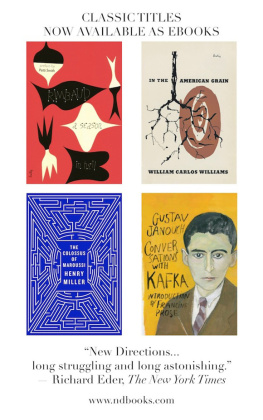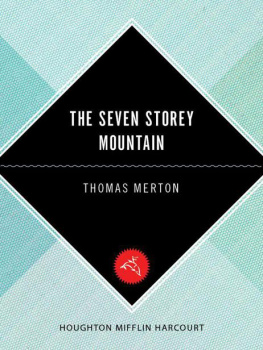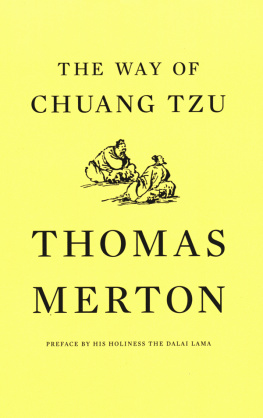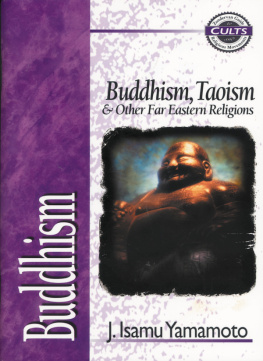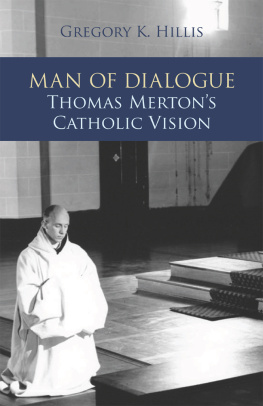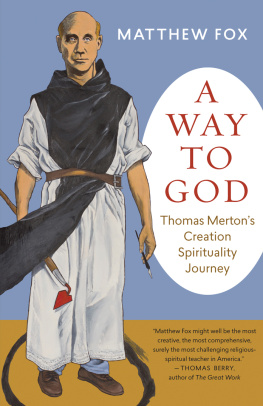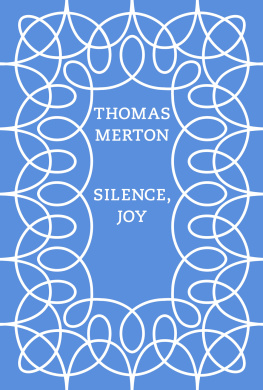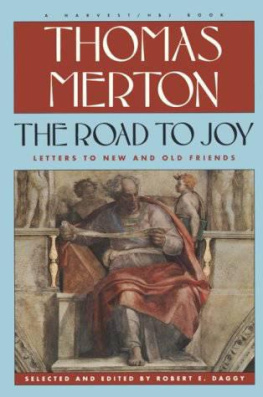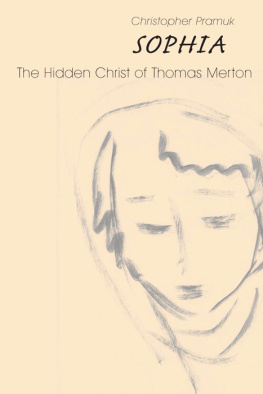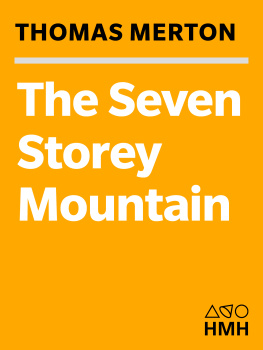THOMAS MERTON AND
THE MONKS OF ASIA
BY GEORGE WOODCOCK
As with many people whom we suspect of being geniuses, Thomas Mertons breadth of vision lay largely in the self-contradictory nature of his interests and urges, their apparent fragmentation being a sign of a deep unity. He was a painstaking priest of the Roman Church and a monk in one of the strictest Catholic Orders, the Cistercians or Trappists. And enclosed within the walls of the Abbey of Gethsemani in Kentucky he remained, with few sallies into the outer world, before that bold expedition to a monastic conference in Asia that ended in his lonely and premature death. He was then a man at the height of his literary and intellectual powers and of his moral influence; perhaps the only man who could stand beside him as a spiritual force was the Dalai Lama, with whom he discoursed fervently and as an equal.
Even in Mertons early monastic life he showed the contrary impulse, the urge away from the disciplines of congregational activities. He began to experience the desire for the minimalist and contemplative life of the hermit, and found that the Trappist rules were not so strict as he had imagined. In the great wilderness area of Gethsemani he was allowed his cinder-block hermitage, while he also took part in the collective activities of the monastery. He was also encouraged to write and publish under minimal censorship, and the monastery reaped his royalties. Merton started to write two kinds of verse: the poetry of the choir, poems of holy and collective celebration, full of triumphant noise and vivid, even gaudy imagery; and the very different poetry of the desert, austere and quiet, celebrating the unity of simplicity and true knowledge as projected years ago by the ancient hermits of the Egyptian desert.
From the beginning the poetry and the prose narratives Merton published established a surprisingly broad readership, not only among Catholics but also among dissenters of all kinds, like the present writer. We were impressed by the lyrical talents of a young man who did not fit in with the general pattern of the poet in the 1940s and 1950s, but we were also intrigued, even as sceptics, by the revelations that Mertons prose works, like The Seven Storey Mountain, gave of the devout mind. Here was someone to whom one might listen, someone to arouse ones discursive urges. And Merton, by what is perhaps the decisive paradox of his existence, remained orthodox in doctrine even as he allied himself with the radical urges that were reshaping Catholicism. Vatican IIs revision of the great Tridentine forms of the Counter-Revolution provided the authorization he needed to draw near to other men and women of eremitic inclinations and mystical aims. He opened his mind to the treasuries of Protestant (including Anglican) theology and experience. He tentatively began, almost from the beginning of his monastic career, to discover the great Asian religions like Buddhism and Taoismmany of them godless creeds in which the disciplines leading to insight were comparable to those of his fellow Catholic mystics.
In all of this Merton revealed yet another paradoxical aspect of his nature, or perhaps rather of his situation. Enclosed from the world as a Trappist monk, and seeking within the Order for ever greater degrees of eremitic solitude, he found himself encouraged by his superiors to publish his writings, which developed an extraordinary popularity for the works of a man notin the literal sensein the world of letters. And the interest in him carried on even after the great flood of converts and postulates into the church subsided.
Part of the reason for this was that Merton rarely wrote merely for churchmen and churchwomen. He used a kind of open eloquence that made his writings, even in their early more dogmatic stages, accessible to non-Catholics or even non-religious people, whether fellow poets or not. He had learnt the lesson of bringing the sinner to repentance, and it is significant that of all the great contemporary teachers he thought most highly of a thinker and a man of action who was only partly Christian. This was M. K. Gandhi, the Mahatma, who made the Hindu concepts of ahimsa and satyagraha a basis for his extraordinary campaigns of non-violent resistance that successfully dissolved the British Raj.
It was as late as 1965, less than four years before his death, that Merton began to publish the series of short books concerning his view of Asian religious beliefs as well as his own changes of perception. As a western, Christian monk, he embarked on an exploration of the great eastern traditions, Zen Buddhism and Lamaist Buddhism, Taoism, Hinduism and Sufism. Gandhi on Non-Violence appeared in 1965, and The Asian Journal, which came to an end with his sudden, tragic death in December 1968, was published in 1973.
In approaching them, however, we must not assume either that they represent a sudden shift in the attitudes of a strict Cistercian monk (as Merton had once attempted to be), or that they were in themselves finished and definitive works.
Long before he wrote specifically on the eastern teachers, he was readingby the early 1940sthe writings of Aldous Huxley (such as Ends and Means and The Perennial Philosophy) concerning various mystical traditions. And certainly by the time he published New Seeds of Contemplation in 1961 he was in personal contact with the great Zen master, well known in the west, Daisetz Suzuki. (A good study relating Huxley and Merton remains to be written.)
Yet even to the end there was a touch of tentativeness, a kind of adumbrative caution about Mertons writing on the Asian thinkers and teachers. The Gandhi item is in fact a kind of handbook on Gandhis sayings on the philosophy and practice of non-violence. Nowhere, when he writes of non-Christian religious communities, is there any evidence that he tried to know one of them by experience. His explorations tended to be through conversation and reading, and even then, especially in connection with Lamaist Buddhism, he did not always seem to talk to the right people. And here I suppose is the answer to the question that raises itself in ones mind. Why did he not take all this knowledge that lay in his mind and blend it into a major work on monasticism and mysticism? He was perfectly capable. Time and accident of course played their parts in preventing him, but there still seems a stubborn personal resistance to moving overtly into Ecumenism. Perhaps this is because in the world of mystic experience every man is his own church; there are no esoteric languages that can tell the ultimates of experience; and so in the end there is no real community of the spiritual. It is no matter of creed. It is a matter of each mans attitude to God or, in godless beliefs like Buddhism and Taoism, to the All.
This increase in interest in the great Asian beliefs during his last eight years coincided with great changes taking place in the world and even within the walls of Gethsemani. The old austere rule being relaxed, life in the monastery became more comfortable and less restricted. And in many ways the institution began to take on the character of a colander, still rigid in form but full of holes through which the influences of the outer world penetrated. One of these influences was a specifically American one. Thousands of young men, released from the army, flooded into the monasteries (and often out again almost as quickly) and, for a long period as Master of Novices and therefore spiritual director of these young men, Merton closely observed the minds of young Americans and was drawn into their concerns. The great movement for Black civil rights in the 1960s appealed to him as a militant Christian (he had earlier done social work in Harlem), and it was in writing about this that he first made himself heard as a social critic. He admired the methods of Martin Luther King, Jr. and his associates, and for the first time recognized the value and the validity of non-violent action. And thus it was through an American movement that he came to Gandhi, and through Gandhi and the

